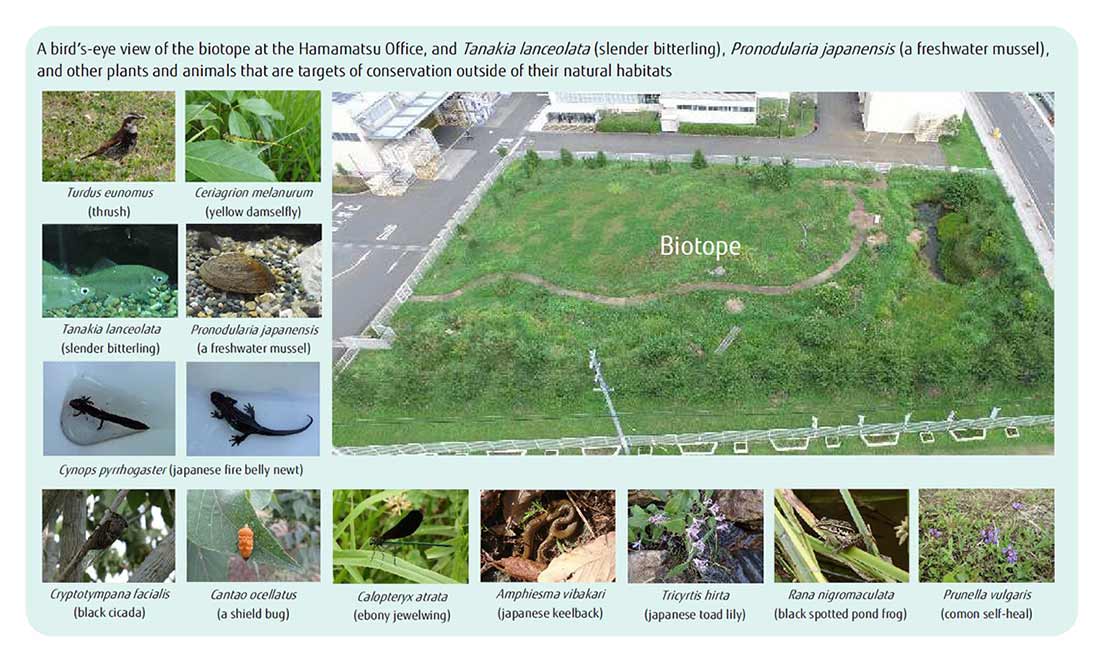Environment : Activities for Reducing Our Own Environmental BurdensBiodiversity Conservation
Basic Approach
At the Fujitsu General Group, we strive to conserve and make sustainable use of biodiversity, based on our idea that "our business activities both benefit from and impact biodiversity."
Fujitsu General Group Biodiversity Action Principles
In order to specifically tackle biodiversity under the Fujitsu Group common philosophy, we rearranged the "Fujitsu Group Biodiversity Conduct Guidelines" of Fujitsu Limited for Fujitsu General and formulated the "Fujitsu General Biodiversity Action Principles" in 2012.
Creating a Network of Ecosystems by Developing a Biotope
The Hamamatsu Business Office maintains a biotope that it created in the green space on its premises in FY2012. Conservation of the rare species of Tanakia lanceolata (slender bitterling) and Pronodularia japanensis (a freshwater mussel), both of which are listed as Endangered Species I A Type (Note 1) in the Red Data Book of Shizuoka Prefecture, has been achieved inside the biotope, and their natural breeding has been confirmed at present. Many other plants and animals live and grow here, including Oryzias latipes (Japanese rice fish, endangered species II), Rana nigromaculata (black spotted pond frog, semi-endangered species), Appasus japonicus (Ferocious water bug, Noteworthy), Sparganium fallax (Yamatomikuri, endangered species II) and Brasenia schreberi (Water shield, semi-endangered species). In addition, the overgrown plants are thinned out and non-native species removed to create an environment that can attract native species living around our business site.
As a result, the number of species found in the biotope, such as Calopteryx atrata (ebony jewelwing) and Amphiesma vibakari (Japanese keelback, a snake), is increasing year by year.
Children from Iinoya Elementary School in Hamamatsu have been dedicated to taking care of their neighboring biotope to conserve the Tanakia lanceolata (slender-bitterling) species. This was started as part of the city's Education for Sustainable Development (ESD) model program. To assist their endeavors, we regularly offer Tanakia lanceolata from our biotope as donations starting in 2019.

Fauna and flora inhabiting and growing in the biotope are introduced in the following page.
- Note1 Endangered Species I A Type :
- Category for species with a very high risk of extinction in the wild in the very near future.








 GLOBAL | English
GLOBAL | English